What Does The Mexican Codex Map Represent?
A.Sutherland - AncientPages.com - This Mexican map is a property plan illustrating the foundation of two towns in the region of Tlaxcala, Mexico.
It was created 50 years after the Spanish conquered the Aztecs in AD 1521. The document was painted on native Mexican bark paper (in Nahuatl: amatl), which was widely produced in pre-Hispanic times in Mexico. The text was written in the local language, Nahuatl language, using an imported European alphabet.
The map, about 75 centimeters (30 inches) wide and 50 centimeters (20 inches) tall, was created in the city of Tlaxcala, which was also the name of the Pre-Columbian city and culture.
The people of Tlaxcala allied themselves with the Spanish to finally defeat the Aztecs.
Each town is represented by its newly built grand church - Santa Barbara Tamasolco (left) and Santa Ana (right). These two churches with bell towers, are painted in bright colors of yellow, blue and pink and represent the main features of the map.
The map also depicts a tree (in the middle) and under it, there are three figures wearing European clothing.
Other features on the map include several roads, water-courses and houses, of which one could be a hotel-like building as its name is ‘tecali techialoyan’ (‘the place where one meets people’).
The Mexican Codex Map represents a symbol of collaboration (on a religious and social level) between native people of Mexico and the Spanish colonialists.
For instance, the local Nahuatl language is used with the European alphabet, all Spanish and native names are used together and the names of the landowners tell that the Spanish settlers have intermarried with native aristocrats of Tlaxcala.
See also:
Ancient Codex Cospi: Intriguing Pre-Columbian Ritual Manuscript From Central Mexico
Florentine Codex: Remarkable Manuscripts About Life Of The Aztecs
Neil Macgregor writes: “…the map show marriages between Spanish settlers and native Indian aristocrats, evidence of a remarkable fusion between the two peoples and the emergence of a new, mixed, ruling class. More surprisingly, a similar fusion took place in the church…”
Historically, it is known that the Spanish justified their conquest of Mexico by arguing that it was their duty to convert the native population to Christianity.
The people of Tlaxcala were not conquered but fought with the Spanish against the Aztecs. They were also supposedly the first Mexican Indians to be baptized and become Christians.
Written by – A. Sutherland AncientPages.com Staff Writer
Copyright © AncientPages.com All rights reserved. This material may not be published, broadcast, rewritten or redistributed in whole or part without the express written permission of AncientPages.com
Expand for referencesMore From Ancient Pages
-
 Modern Humans Did Not Enter Europe By Sea – New Study Says
Archaeology | Mar 7, 2022
Modern Humans Did Not Enter Europe By Sea – New Study Says
Archaeology | Mar 7, 2022 -
 The Writing Ball: A Great Invention In 1870
Ancient History Facts | Jun 30, 2016
The Writing Ball: A Great Invention In 1870
Ancient History Facts | Jun 30, 2016 -
 New Clues To Behavior Of Neanderthal Hunting Parties
Archaeology | Mar 27, 2023
New Clues To Behavior Of Neanderthal Hunting Parties
Archaeology | Mar 27, 2023 -
 How Did Ancient Romans Grow Their Gardens?
Ancient History Facts | May 25, 2018
How Did Ancient Romans Grow Their Gardens?
Ancient History Facts | May 25, 2018 -
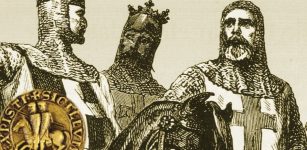 Knights Templar – Among The Most Wealthy And Powerful Of The Western Christian Military Orders
Featured Stories | Jun 11, 2020
Knights Templar – Among The Most Wealthy And Powerful Of The Western Christian Military Orders
Featured Stories | Jun 11, 2020 -
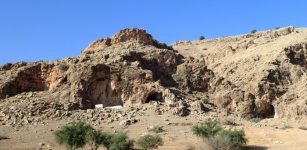 Early Humans In The Paleolithic Age Had A More Varied Diet Than Previously Assumed
Archaeology | Nov 29, 2023
Early Humans In The Paleolithic Age Had A More Varied Diet Than Previously Assumed
Archaeology | Nov 29, 2023 -
 Rare Medieval Chess Piece And Game Collection Unearthed At A Forgotten Castle
Archaeology | Jun 7, 2024
Rare Medieval Chess Piece And Game Collection Unearthed At A Forgotten Castle
Archaeology | Jun 7, 2024 -
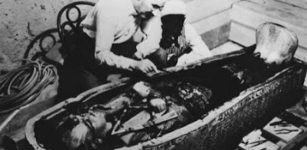 Howard Carter Stole Tutankhamun’s Treasures – Previously Unpublished Letter Reveals
Archaeology | Aug 15, 2022
Howard Carter Stole Tutankhamun’s Treasures – Previously Unpublished Letter Reveals
Archaeology | Aug 15, 2022 -
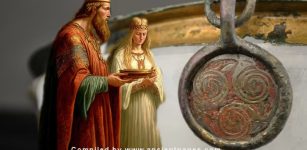 Mystery Of The Anglo-Saxon Burial At Lowbury Hill May Soon Be Solved
Archaeology | Mar 7, 2023
Mystery Of The Anglo-Saxon Burial At Lowbury Hill May Soon Be Solved
Archaeology | Mar 7, 2023 -
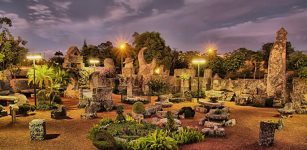 Coral Castle Is Among Most Fascinating And Mysterious Buildings In Florida
Featured Stories | Sep 17, 2018
Coral Castle Is Among Most Fascinating And Mysterious Buildings In Florida
Featured Stories | Sep 17, 2018 -
 The Colored Skeletons Of 9000-Year-Old Çatalhöyük (Catalhoyuk), Turkey – New Examination
Archaeology | Mar 18, 2022
The Colored Skeletons Of 9000-Year-Old Çatalhöyük (Catalhoyuk), Turkey – New Examination
Archaeology | Mar 18, 2022 -
 Mystery How Humans Lost Their Body Hair Solved By Scientists
Archaeology | Jan 4, 2023
Mystery How Humans Lost Their Body Hair Solved By Scientists
Archaeology | Jan 4, 2023 -
 Surprising And Fascinating Finds On The Wreck Of The Lootsi Cog
Archaeology | Nov 27, 2023
Surprising And Fascinating Finds On The Wreck Of The Lootsi Cog
Archaeology | Nov 27, 2023 -
 ‘Yunatsite’ And Thought-Provoking Theory That Balkan Peninsula And Not Mesopotamia Was The Cradle Of Civilization
Featured Stories | Feb 14, 2023
‘Yunatsite’ And Thought-Provoking Theory That Balkan Peninsula And Not Mesopotamia Was The Cradle Of Civilization
Featured Stories | Feb 14, 2023 -
 El Cid ’The Lord’ – Medieval Castilian Leader Known For His Courage And Extraordinary Military Skills
Featured Stories | Sep 20, 2021
El Cid ’The Lord’ – Medieval Castilian Leader Known For His Courage And Extraordinary Military Skills
Featured Stories | Sep 20, 2021 -
 Elk Tooth Rattlers And People’s Dance 8,000 Years Ago
Archaeology | Jun 4, 2021
Elk Tooth Rattlers And People’s Dance 8,000 Years Ago
Archaeology | Jun 4, 2021 -
 5,000-Year-Old Underground Partly Submerged City Discovered In Turkey’s Cappadocia
Archaeology | Jun 10, 2019
5,000-Year-Old Underground Partly Submerged City Discovered In Turkey’s Cappadocia
Archaeology | Jun 10, 2019 -
 Illapa: Powerful Master Of Clouds, Rain And Hail – Worshipped By Inca People
Featured Stories | Jul 7, 2016
Illapa: Powerful Master Of Clouds, Rain And Hail – Worshipped By Inca People
Featured Stories | Jul 7, 2016 -
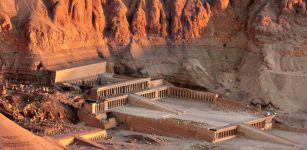 Deir el-Bahri – Sacred Resting Place For The Pharaohs
Featured Stories | Mar 22, 2022
Deir el-Bahri – Sacred Resting Place For The Pharaohs
Featured Stories | Mar 22, 2022 -
 10,000-Year-Old Seeds Offer First Evidence Of Farming In A Green Sahara
Archaeology | Mar 19, 2018
10,000-Year-Old Seeds Offer First Evidence Of Farming In A Green Sahara
Archaeology | Mar 19, 2018

